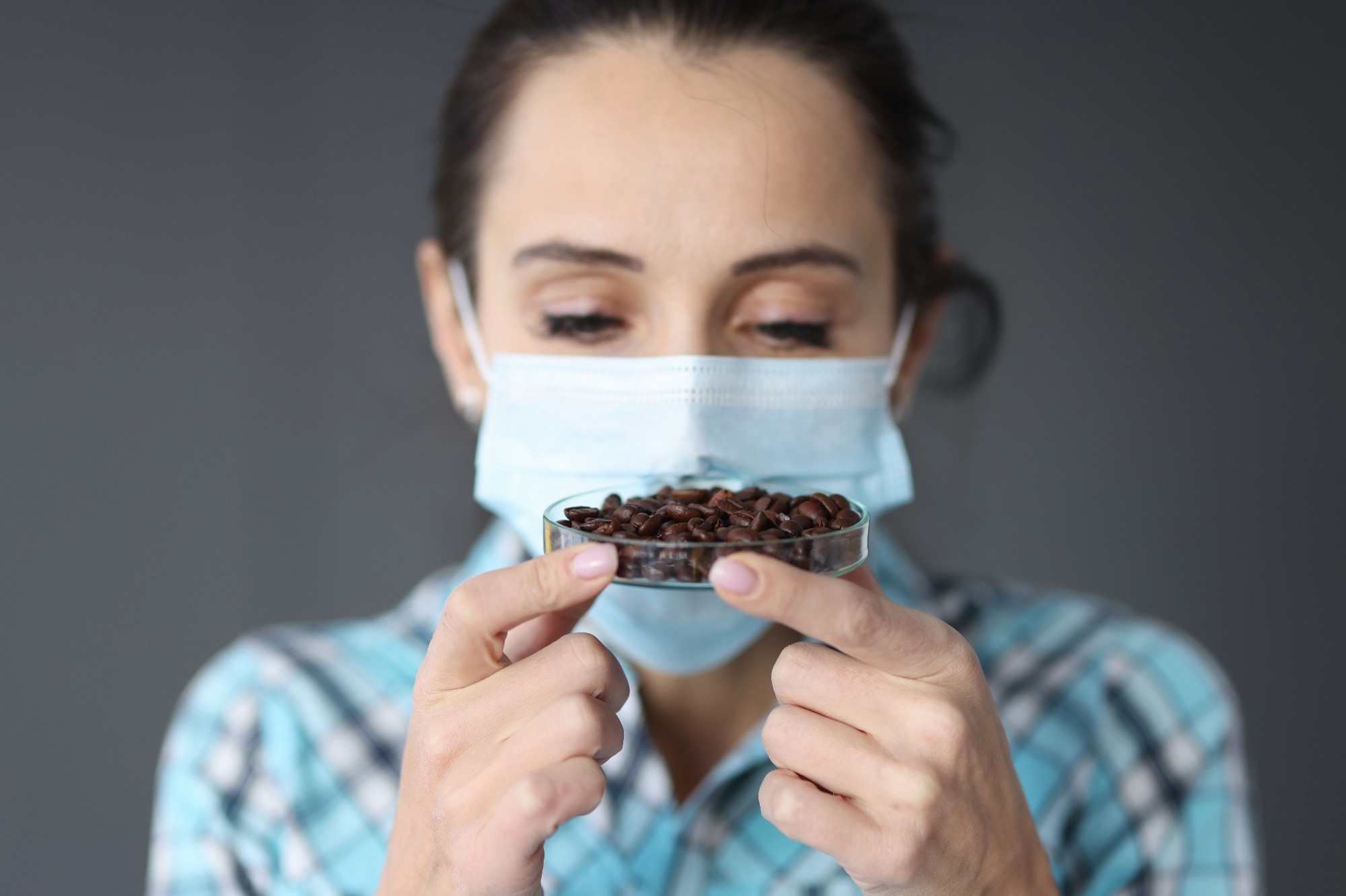In a recent study published in the journal JAMA Network Open, researchers aimed to quantitatively assess the long-term smell and taste-associated outcomes of coronavirus disease 2019 (COVID-19) using validated psychophysical tests to circumvent the inaccuracies that could occur with self-reported taste dysfunction.
Study: Long-Term Taste and Smell Outcomes After COVID-19. Image Credit: megaflopp/Shutterstock.com
Background
The COVID-19 pandemic has been successfully contained after the development of various vaccines and worldwide efforts to vaccinate large parts of the population. However, post-COVID-19 condition (PCC), commonly referred to as long coronavirus disease (long COVID), is an ongoing public health concern.
Statistics show that between 10 and 35 million adults in the United States (U.S.) are affected by PCC. Long COVID or PCC consists of a wide range of symptoms, with the common ones being fatigue, post-exertional malaise, and dyspnea.
However, the condition affects various organ systems, with severe cases involving cardiovascular and renal complications and neurological symptoms such as brain fog or inability to concentrate.
A common symptom of severe acute respiratory syndrome coronavirus 2 (SARS-CoV-2) infections was the loss of taste and smell.
However, there is a lack of studies that have assessed the chemosensory dysfunction in PCC patients over follow-up intervals of a year or more after the SARS-CoV-2 infection.
Furthermore, since self-reports of loss of taste or smell can be inaccurate, there is a need to assess the occurrence of taste dysfunction in PCC quantitatively.
About the study
In the present study, the researchers aimed to assess the long-term SARS-CoV-2-associated outcomes on the sense of taste and smell using nationwide data and a validated quantitative taste test. They also compared the results from this taste test with a reliable and commonly used olfactory test.
The study evaluated the prevalence of smell and taste dysfunction a year after the initial SARS-CoV-2 infection. It examined whether COVID-19 resulted in changes in the perceptions of sour, sweet, salty, bitter, and umami flavors in individuals experiencing smell and taste dysfunction a year after the initial SARS-CoV-2 infection.
They also assessed whether these findings were correlated with sex or age and investigated the association between the test scores and the SARS-CoV-2 variant responsible for the initial infection.
The participants largely represented the relative populations of 48 U.S. states and were recruited without specifying COVID-19 as a criterion in the recruitment advertisements. Healthy individuals were included in the study if they had no other disorder, such as a neurodegenerative disease or head trauma condition that could impact the ability to smell and taste.
Medical histories of the participants consisting of COVID-19 diagnosis dates and methods used to diagnose, such as antibody and polymerase chain reaction (PCR) tests, were obtained.
The taste function test used was the Waterless Empirical Taste Test, where 53 non-liquid test items were provided on taste strips, with no rinsing required between trials.
These items belonged to five categories, namely, sweet, salty, bitter, sour, and brothy. The 40-item smell function test consisted of four booklets containing scratch and sniff cards for various odorants, with four alternatives provided for each odorant to be identified through a multiple-choice question.
Results
The results showed that the chemosensory dysfunction associated with taste did not last a year after the initial SARS-CoV-2 infection. However, a third of the individuals exposed to COVID-19 complained of loss of smell for over a year after the initial exposure to the virus, providing a possible explanation for the loss of taste reported by many PCC patients.
Furthermore, the effect size of the patients reporting a continued loss of smell was insignificant, indicating a progressive improvement in all chemosensory functions.
The study also found that the degree of loss of smell was different for each variant of SARS-CoV-2, and the relative loss of smell remained consistent for close to a year after the initial infection.
Similar to the results from other studies, the researchers reported that the Omicron variant caused loss of smell less frequently than the different variants. The Alpha variant was reported to have the highest prevalence of loss of smell, followed by the original strain and the Delta variant.
While declines in test measures associated with age were observed, age was independent of the chemosensory outcomes of SARS-CoV-2 infections.
For the overall taste test, as well as for categories such as citric acid, sucrose, sodium chloride, and caffeine, the test scores were higher for females than for males.
Conclusions
Overall, the findings reported that taste-associated chemosensory dysfunction does not persist for more than a year after a SARS-CoV-2 infection. Still, approximately a third of the COVID-19 patients report continued loss of smell for over a year after recovering from the initial infection.
The earlier SARS-CoV-2 variants, including the original strain and the Alpha and Delta variants, had a higher prevalence of loss of smell and taste symptoms than the Omicron variant.
Read the full article here




